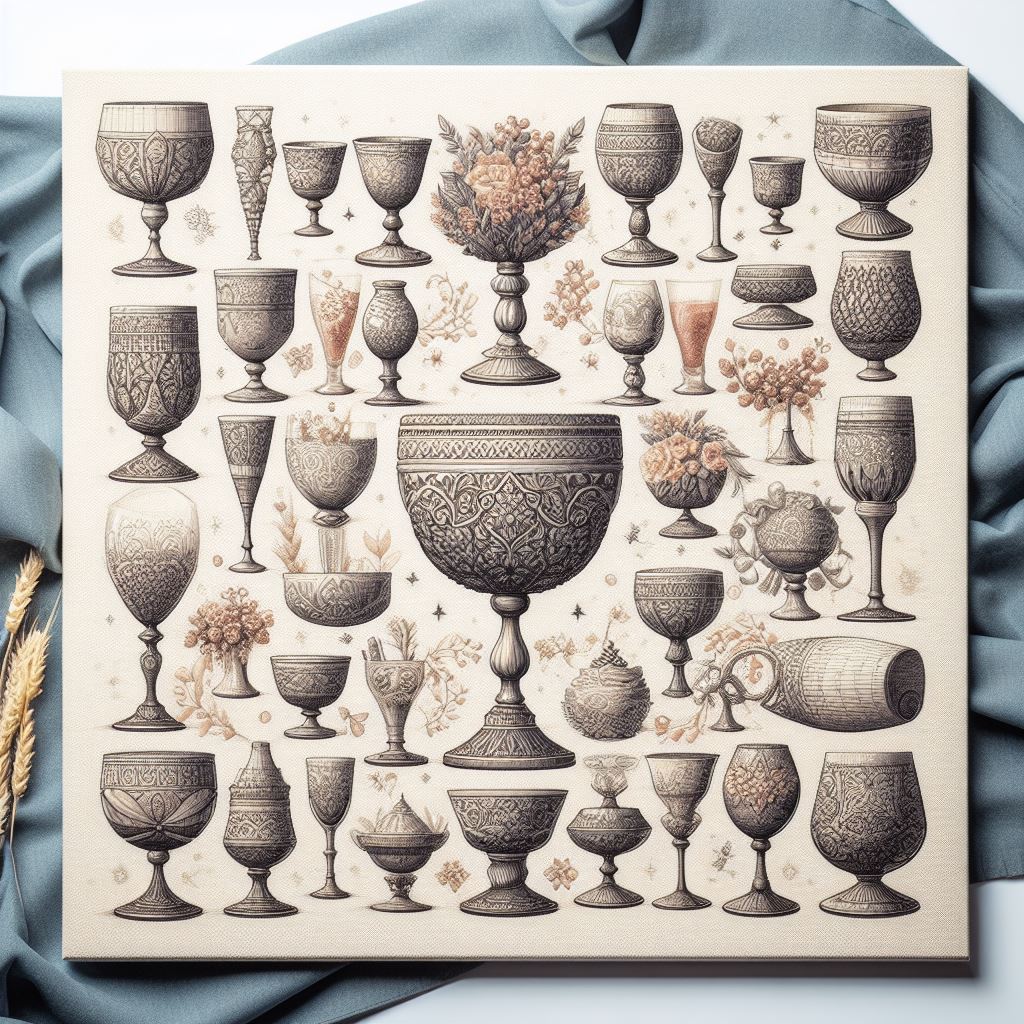Goblets, with their diverse designs and myriad uses, provide a delightful blend of functionality and artistry. More than mere vessels, these captivating objects, often characterized by their stemmed and bell-shaped structure, add a layer of elegance to any occasion. Whether it’s a simple family dinner or a grand wedding, the presence of a goblet can transform an ordinary event into a memorable celebration. This article will delve into the various types of goblets categorized by their function and usage, exploring their sensory and cultural implications, and how they pair with beverages and food. Let’s explore the world of goblets in all their purposeful elegance.
Beverage Goblets: Delight in Every Drop
Beverage goblets, as the name suggests, are primarily used for serving drinks. These goblets are carefully designed considering the characteristics of specific beverages they are intended to hold. Each type, typically made from materials like glass, ceramic, or metal, has its unique features that enhance the drinking experience, influence our perception, and stimulate our senses in a multitude of ways.
Wine Goblets
Wine Goblets, often crafted from glass or crystal, are typically characterized by a broad, deep bowl. This design allows the wine to breathe, thus intensifying its aroma. Their stems are specifically designed to ensure that the heat from your hand does not warm the wine, maintaining its perfect serving temperature. The psychological impact of drinking wine from such a goblet can enhance the taste and overall experience. Pairing a wine goblet with a robust red or a delicate white can elevate your wine-tasting journey, making each sip an experience to savor.
Champagne Goblets
Champagne Goblets, commonly made from glass or crystal, are often more narrow and tall compared to wine goblets. This shape helps to retain the effervescence and flavors of champagne. Their elongated structure channels the flow of bubbles, enhancing the sensory experience with each sip. Furthermore, they’re traditionally held at the stem, demonstrating a sophisticated yet optional drinking etiquette.
Beer Goblets
Beer Goblets, typically made of robust glass, are known for their sturdy construction. Their wide-mouth design promotes hearty gulps and allows one to enjoy the frothy head and complex flavors of high-alcohol beers. Paired with strong, hoppy beers, these goblets can deliver a robust and immersive beer drinking experience.
Cocktail Goblets
Cocktail Goblets, commonly made from glass and occasionally from metal, come with decorative features and varying shapes. These goblets are perfect for serving a range of mixed drinks, their design adding a touch of sophistication to the cocktail presentation. The different shapes and sizes of cocktail goblets often pair well with the character of specific cocktails, enhancing the overall cocktail experience.
Mead Goblets
Mead Goblets are typically made of materials like glass or ceramic, celebrating the historical and traditional aspects of mead-drinking with their design, often depicting Celtic, Norse, or Medieval imagery. Paired with a traditional feast, these goblets perfectly complement the historical beverage of mead, enhancing the rich, honeyed taste.
Water Goblets
Water Goblets, generally crafted from glass or crystal, are an elegant alternative to standard water glasses. They are generally larger than wine goblets and add a touch of elegance to your dining table. Holding a water goblet properly, with fingertips at the stem’s base, showcases refined, yet optional, dining etiquette.
Special Use Goblets: For Those Memorable Moments
Special use goblets, designed with specific occasions or purposes in mind, not only serve a functional role but also carry emotional and symbolic value, often being integral to cultural ceremonies and traditions.
Dessert Goblets
Dessert Goblets, made from a variety of materials including glass and plastic, serve dual purposes. They hold delicious treats like ice creams and parfaits while simultaneously enhancing the visual appeal of these desserts. Their creative designs can turn a simple dessert serving into an extraordinary experience. Paired with colorful and layered desserts, these goblets add an aesthetic appeal to the entire dining experience.
Wedding Goblets
Wedding Goblets, or ‘toasting flutes’, are usually made from crystal or glass, sometimes with silver or gold accents. They hold a significant place in matrimonial ceremonies. Often personalized, these goblets become cherished keepsakes for couples, symbolizing love, unity, and celebration. The act of raising a wedding goblet and making a toast is steeped in tradition, adding a layer of ceremonial etiquette to the occasion.
Communion Chalices (Religious Ceremony Goblets)
Communion Chalices, used in various religious traditions including Christianity, Judaism, and Pagan rituals, are revered for their sacred purpose. Typically crafted from precious metals like silver or gold, they hold the wine or juice symbolizing the blood of Christ in Christian rituals or analogous symbols in other faith traditions. The design varies across denominations and religions but always reflects respect and reverence. The way a chalice is held and lifted during the ceremony carries significant meaning, reflecting the sanctity of the ritual.
As you venture into the vast world of goblets, remember that their beauty extends beyond aesthetics. Each goblet, with its unique design and purpose, provides a sensory experience that elevates your beverage consumption and makes every occasion special. The pairing of goblets with specific beverages and foods, their cultural significance, and the etiquette, which is traditional rather than rigid, surrounding their use are all essential aspects of the ‘Purposeful Elegance of Goblets’. Now that you have a better understanding of goblets and their purposeful elegance, it’s time to choose the perfect one for your next event – formal or casual, the choice is yours.
While this article provided a detailed exploration of the purposeful elegance of goblets, you can dive deeper into their diverse world by exploring different facets such as material, historical significance, design attributes, and more. To further enrich your knowledge, we recommend reading our comprehensive guide, The Goblet Compendium.
